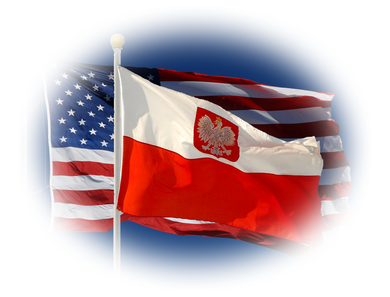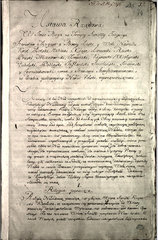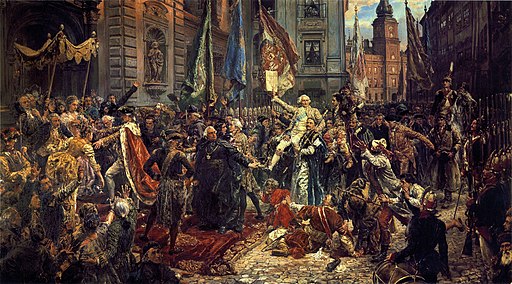
UPCOMING POLISH HOLIDAYS
May 2: FLAG DAY
(Dzień Flagi Rzeczypospolitej Polskiej)
(established on February 20, 2004)
May 2: DAY of POLONIA and POLES ABROAD
(Dzień Polonii i Polaków za Granicą)
(established on March 20, 2002)
May 3: CONSTITUTION DAY (Święto Narodowe Trzeciego Maja)
(restored as an official holiday in April 1990)
Join the PHC Book Club discussing the CONSTITUTION of MAY 3, 1971
The 225 Anniversary of the
Constitution of May 3, 1971
(Konstytucja 3 maja)
As a major triumph of the enlightened and patriotic Polish citizenry, the Constitution of May 3, 1791 was the first modern constitution in Europe (preceding the French Constitution of September 1791) and the second oldest in the world (following the United States Constitution created on September 17, 1787). But in comparison to the American and French constitutions - linked respectively to the American Revolutionary War and French Revolution - the Polish constitution was forged in critical but bloodless circumstances (no major wars within two prior decades ).
The Constitution of May 3rd was designed to avert the looming demise of the country sinking into political chaos and suffering territorial losses to its neighbors. The state was then called the Polish–Lithuanian Commonwealth uniting the Crown Kingdom of Poland and the Grand Duchy of Lithuania under a common ruler and a single legislative body (called sejm) equipped with strong powers to elect and limit the monarch's governance. This unique political system was called the Golden Liberty or the "Nobles' Democracy" since the extensively privileged nobility (called szlachta) had a firm grip on the legislature.

click here to read the entire article
and the Book Club Meeting info
Passing of the May 3 Constitution was the main achievement of the Great Sejm that convened in 1788 and remained in session for 4 years. As a victory for the reformists striving to rectify the laws that brought the country to the brink of anarchy, the act abolished the disastrous liberum veto, restored the majority vote, changed the monarchy from elective to hereditary and established clear separation between the three branches of the government. In terms of social reforms, it failed to abolish serfdom but granted peasants legal protection under the national law. The act also reduced some inequalities between nobility and townspeople.
The "Constitution of May 3, 1791" painting by Jan Matejko (1838-1893) shows the last Polish King Stanislaus Augustus (Stanisław II August Poniatowski) with members of the Great Sejm and enthusiastically supportive inhabitants of Warsaw entering the St John's Cathedral to swear in the newly adopted Polish Constitution. Originally displayed in Krakow's Sukiennice, the paining was on display in Lwów (1892-1920) and Kraków (1920-1939). After surviving the WWII hidden bu the Polish Resistance, the painting was moved to the National Museum in Warsaw. Since 1984, the painting is on display in the Warsaw's Royal Castle (visible in the background), where the Great Sejm adopted the Constitution. Click on the picture to see annotations
